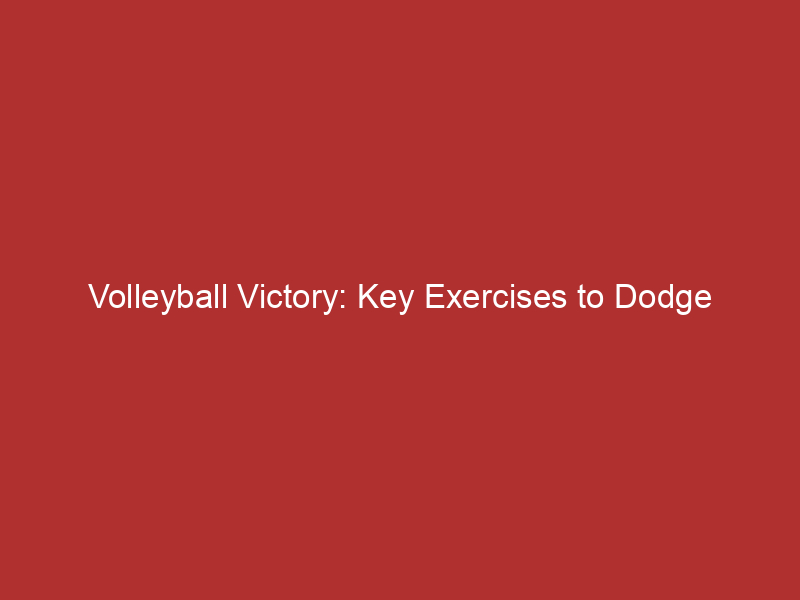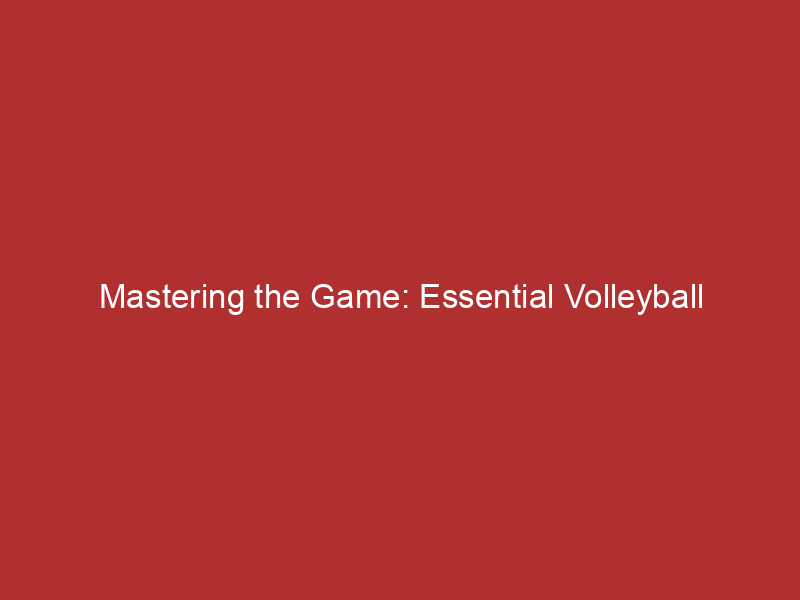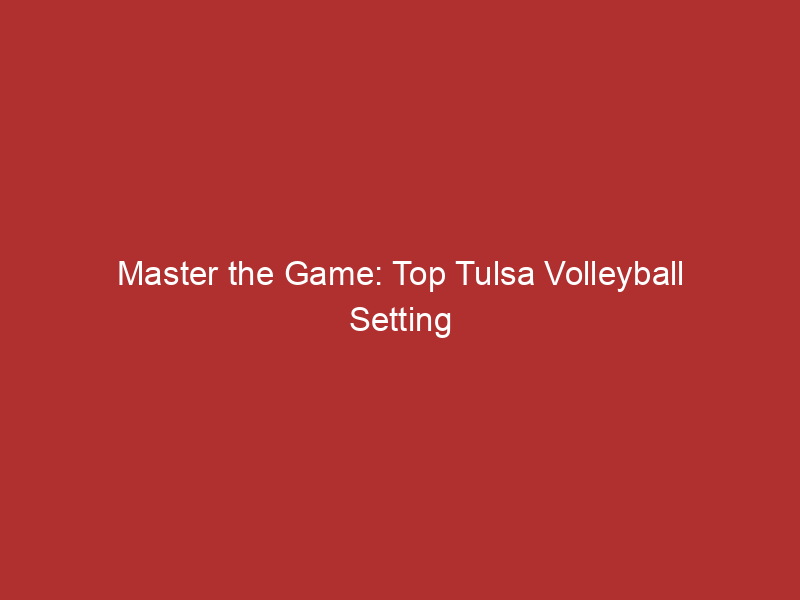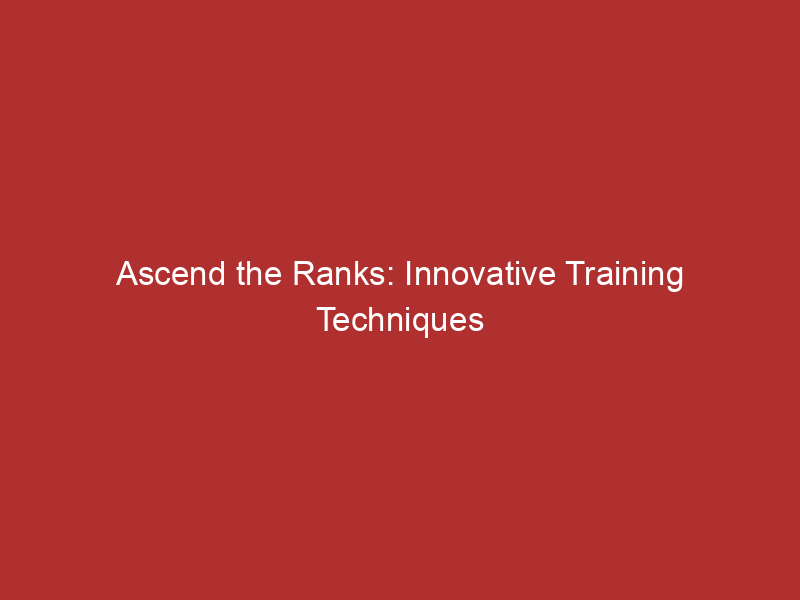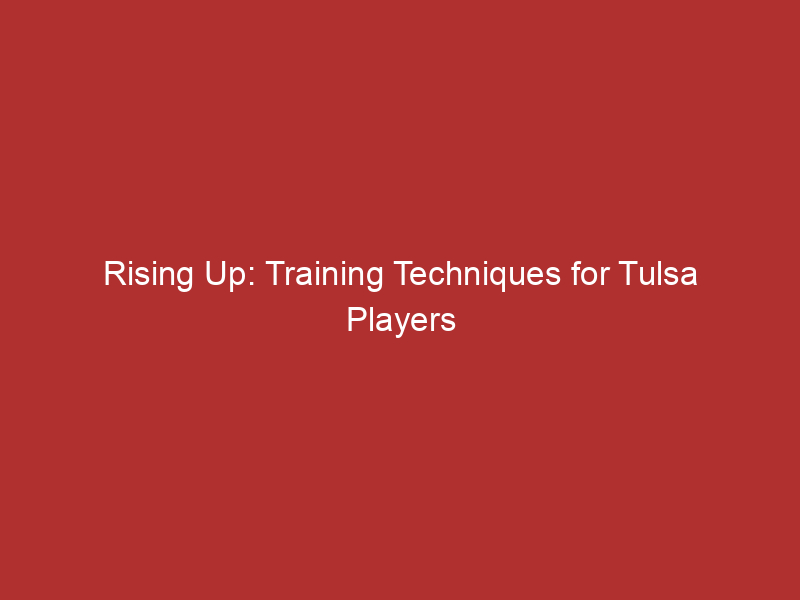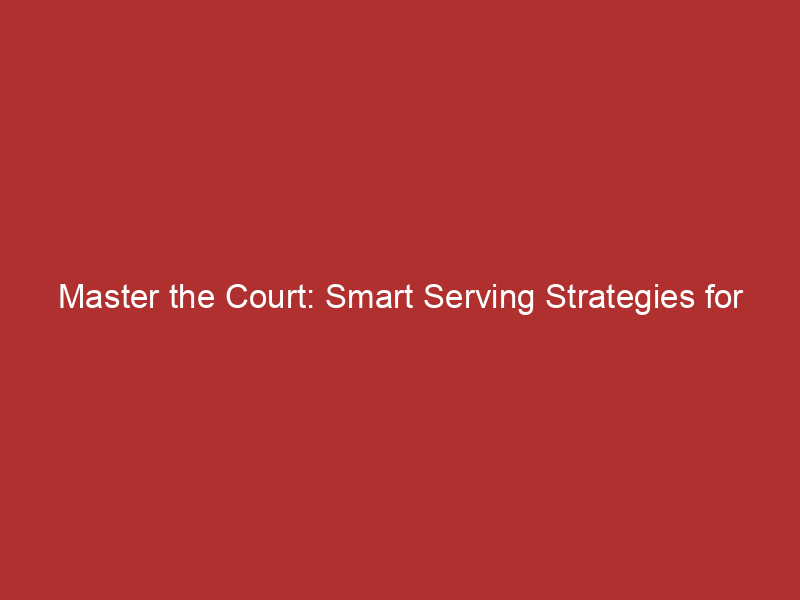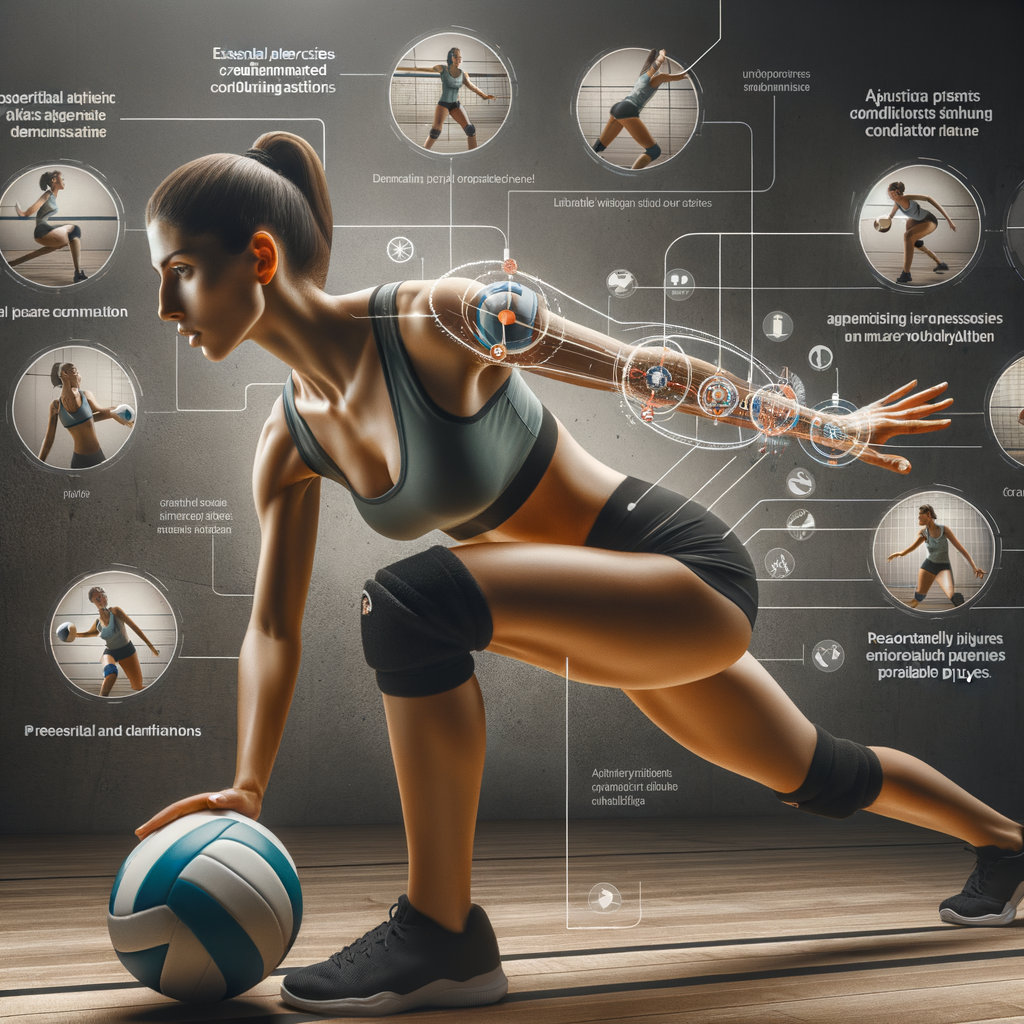
Introduction to Volleyball Injury Prevention
Playing volleyball is a fun and exciting way to stay fit. However, like any other sport, it comes with the risk of injuries. In this section, we will discuss the importance of injury prevention in volleyball and the common injuries that players often face.
- Understanding the Importance of Injury Prevention in Volleyball
- Common Injuries in Volleyball and Their Impact on Players
Injury prevention is crucial in any sport, and volleyball is no exception. Injuries can sideline players, affect team performance, and even end careers. Therefore, understanding and implementing injury prevention strategies is vital. It not only helps players stay healthy but also enhances their performance on the court. According to a study by the National Institute of Health, implementing injury prevention programs can reduce the risk of injuries in volleyball by up to 40%.
Volleyball players are prone to a variety of injuries due to the physical demands of the sport. Some of the most common injuries include ankle sprains, shoulder injuries, knee injuries, and finger fractures. These injuries can significantly impact a player’s ability to perform and may require lengthy recovery periods. For instance, an ankle sprain can take anywhere from a few weeks to several months to heal, depending on its severity. This not only affects the player’s participation in the sport but can also impact their daily life activities.
In the following sections, we will delve into the essential exercises for volleyball, athlete training, and specific strategies for preventing injuries in volleyball. We will also discuss fitness exercises tailored for volleyball players. By the end of this article, you will have a comprehensive understanding of how to stay safe and perform at your best in the sport of volleyball.
Essential Exercises for Volleyball
In volleyball, a strong and flexible upper body is crucial. It allows players to serve, spike, and block effectively. Here are some exercises that can help volleyball players build and maintain upper body strength.
Upper Body Exercises
- Push-ups for shoulder strength
- Tricep dips for arm power
- Lat pull-downs for back strength
Push-ups are a great way to build shoulder strength. They work out your chest, shoulders, and triceps, which are all important muscles for volleyball. To do a push-up, start in a high plank position. Lower your body until your chest touches the floor. Then, push your body back up. Try to do at least 10 push-ups a day to start, and gradually increase the number as you get stronger.
Tricep dips can help you develop powerful arms. They target the triceps, which are essential for powerful serves and spikes. To do a tricep dip, sit on the edge of a chair or bench. Place your hands next to your hips. Slide your butt off the chair, and lower your body by bending your elbows. Then, push your body back up. Aim for 10-15 reps per set.
Lat pull-downs can strengthen your back muscles. A strong back can help you maintain good posture and reduce the risk of injuries. To do a lat pull-down, sit at a lat pull-down machine. Grab the bar with your hands shoulder-width apart. Pull the bar down to your chest, and then slowly release it back up. Aim for 10-15 reps per set.
Remember, consistency is key when it comes to exercise. Make sure to incorporate these exercises into your regular training routine for the best results. And always warm up before starting any exercise to prevent injuries.
| Exercise | Muscles Worked | Reps |
|---|---|---|
| Push-ups | Chest, Shoulders, Triceps | 10-15 |
| Tricep Dips | Triceps | 10-15 |
| Lat Pull-downs | Back | 10-15 |
Lower Body Exercises
Now, let’s focus on the lower body exercises that are essential for volleyball players. These exercises will help you build strength, improve balance, and increase speed and agility.
- Squats for Leg Strength
- Lunges for Balance and Coordination
- Jumping Jacks for Agility and Speed
Squats are a powerful exercise for building leg strength. They work your quadriceps, hamstrings, and calves, which are all crucial muscles for jumping and landing in volleyball. To perform a squat, stand with your feet shoulder-width apart, bend your knees and lower your body as if you’re sitting in a chair. Push back up to the starting position. Aim for 3 sets of 10-15 squats.
Lunges are excellent for improving balance and coordination, both of which are vital in volleyball. They also work your quadriceps, hamstrings, and glutes. To do a lunge, step forward with one foot and lower your body until your front knee is at a 90-degree angle. Push back up and repeat with the other leg. Try to do 3 sets of 10 lunges on each leg.
Jumping jacks are a simple yet effective exercise for increasing agility and speed. They get your heart rate up and work your entire body. To do a jumping jack, stand with your feet together and your hands at your sides. Jump up and spread your feet while swinging your arms above your head. Jump back to the starting position and repeat. Aim for 3 sets of 20 jumping jacks.
Remember, the key to these exercises is consistency. Regular practice will help you see improvements in your performance on the volleyball court. So, get started today and watch your game improve!
| Exercise | Muscles Worked | Sets and Reps |
|---|---|---|
| Squats | Quadriceps, Hamstrings, Calves | 3 sets of 10-15 |
| Lunges | Quadriceps, Hamstrings, Glutes | 3 sets of 10 (each leg) |
| Jumping Jacks | Full Body | 3 sets of 20 |
Volleyball Athlete Training
Whether you’re a beginner or have been playing volleyball for years, proper training is essential to improve your skills and avoid injuries. In this section, we’ll provide some helpful training tips specifically for beginners.
Training Tips for Beginners
Starting out in volleyball can be challenging, but with the right approach and dedication, you can quickly improve. Here are some training tips to help you get started:
- Starting with Basic Exercises: Before you dive into the complex techniques, it’s crucial to master the basics. Start with simple exercises like jogging, jumping jacks, and basic ball handling drills. These exercises will help you build your stamina and coordination, which are vital for playing volleyball.
- Gradually Increasing Intensity: As you get comfortable with the basic exercises, start increasing the intensity of your workouts. For example, you can increase the distance you jog, the number of jumping jacks you do, or the speed at which you do your ball handling drills. Remember, the goal is to push your limits, but not to the point of injury.
- Importance of Rest and Recovery: Training is important, but so is rest. Your body needs time to recover after intense workouts. Make sure to get plenty of sleep and take rest days in between your training sessions. This will help your muscles recover and grow stronger.
Remember, everyone progresses at their own pace. Don’t compare your progress with others. Instead, focus on improving your own skills and fitness level. With patience and dedication, you’ll see improvement in no time.
Advanced Training Tips
As you progress in your volleyball training, it’s crucial to incorporate more advanced techniques into your routine. Here are some key areas to focus on:
- Integrating sport-specific exercises:
- Focusing on strength and conditioning:
- Importance of mental preparation:
These exercises are designed to mimic the movements and stresses of volleyball, helping to improve your performance and reduce the risk of injury. For example, plyometric exercises like jump squats can help improve your vertical leap, while lateral lunges can improve your side-to-side movement.
Strength and conditioning exercises help build the muscle power and endurance needed for volleyball. These exercises often involve resistance training, such as weightlifting, as well as cardiovascular exercises like running or cycling. A study by the National Strength and Conditioning Association found that athletes who participated in a strength and conditioning program had a 50% lower risk of injury.
Mental preparation is just as important as physical preparation. Visualization techniques, for example, can help you anticipate and react to game situations more effectively. Additionally, maintaining a positive mindset can help you stay motivated and resilient, even in the face of challenges. As the famous volleyball player Karch Kiraly once said, “It’s not how tall you are, it’s how tall you play.”
| Training Tip | Description | Example |
|---|---|---|
| Sport-specific exercises | Exercises designed to mimic volleyball movements | Plyometric exercises, lateral lunges |
| Strength and conditioning | Exercises to build muscle power and endurance | Resistance training, cardiovascular exercises |
| Mental preparation | Techniques to improve mental resilience and game anticipation | Visualization techniques, positive mindset |
Preventing Injuries in Volleyball
One of the key aspects of volleyball is staying injury-free. This can be achieved by incorporating a proper pre-game warm-up routine. Let’s delve into the details.
Pre-Game Warm-ups
Pre-game warm-ups are essential for any sport, and volleyball is no exception. They prepare your body for the intense activity ahead, reducing the risk of injuries. Here are three crucial steps to a successful pre-game warm-up:
- Dynamic Stretching
- Cardio Warm-up
- Sport-specific Drills
Dynamic stretching is a form of active movement that isn’t about holding a stretch but rather taking your body through ranges of motion that will better prepare you for your workout or sporting activity. It helps to increase blood flow and muscle temperature, making your muscles more pliable and less prone to injury. Examples of dynamic stretches include leg swings, arm circles, and lunges.
A cardio warm-up is a low-intensity exercise that gradually increases your heart rate and circulation. This could be a light jog, jumping jacks, or even a brisk walk. The goal is to raise your body temperature and prepare your heart and lungs for the game. A good cardio warm-up lasts about 5 to 10 minutes.
Sport-specific drills are exercises that mimic the movements you’ll be making during the game. For volleyball, this could include drills like setting, spiking, and blocking. These drills not only warm up your body but also help improve your skills and coordination, making you a better player.
Remember, the key to preventing injuries in volleyball lies in a good warm-up routine. So, make sure to incorporate dynamic stretching, a cardio warm-up, and sport-specific drills into your pre-game routine. Stay safe and enjoy the game!
Post-Game Cool Downs
After a vigorous game of volleyball, it’s crucial to cool down properly. This helps to prevent injuries and aids in recovery. Let’s explore three key components of an effective post-game cool down.
- Static Stretching
- Hydration and Nutrition
- Rest and Recovery
Unlike dynamic stretching, static stretching involves holding a stretch for a certain period, usually between 15 to 60 seconds. This type of stretching helps to relax the muscles and increase their flexibility after a game. For instance, a simple hamstring stretch can help alleviate tightness in the back of your legs.
Playing volleyball can make you sweat a lot, leading to loss of water and essential nutrients from your body. It’s important to rehydrate by drinking plenty of water or a sports drink that contains electrolytes. Eating a balanced meal or snack after the game can also replenish your energy stores and aid in muscle recovery. Foods rich in protein, like chicken or tofu, and complex carbohydrates, like whole grains or fruits, are excellent choices.
Lastly, getting adequate rest is vital for your body to recover and repair itself. This doesn’t just mean getting a good night’s sleep. It also includes taking breaks between games or training sessions. Remember, overtraining can lead to injuries and burnout. Listen to your body and give it the rest it needs.
| Post-Game Cool Down Activity | Benefits |
|---|---|
| Static Stretching | Relaxes muscles and increases flexibility |
| Hydration and Nutrition | Replenishes lost fluids and nutrients, aids in muscle recovery |
| Rest and Recovery | Allows body to repair and prevent injuries |
In conclusion, a proper post-game cool down involving static stretching, proper hydration and nutrition, and adequate rest and recovery is essential in preventing injuries and maintaining optimal performance in volleyball.
Volleyball Fitness Exercises
Staying fit is crucial for any sport, and volleyball is no exception. Fitness exercises specifically designed for volleyball players can help improve performance and reduce the risk of injuries. Here are some exercises that can help volleyball players improve their core strength, agility, and endurance.
- Core Strengthening Exercises
- Planks: This exercise targets your entire core. Start by getting into a push-up position, but rest your weight on your forearms instead of your hands. Keep your body straight and hold the position for as long as you can.
- Russian Twists: Sit on the floor with your knees bent. Lean back slightly and twist your torso from side to side. To increase the difficulty, you can hold a medicine ball or a weight in your hands.
- Agility Drills
- Ladder Drills: These drills involve running through a ladder laid flat on the ground, moving in and out of the ladder rungs as quickly as possible.
- Cone Drills: Set up cones in a zig-zag pattern and weave in and out of them as quickly as you can.
- Endurance Training
- Long-Distance Running: This is a great way to build cardiovascular endurance. Start with a distance that is comfortable for you and gradually increase it over time.
- Interval Training: This involves alternating between high-intensity and low-intensity exercise. For example, you could sprint for 30 seconds, then walk for 60 seconds, and repeat.
Core strength is essential for volleyball players. It helps in maintaining balance, improving hitting power, and enhancing overall performance. Here are a few exercises that can help strengthen your core:
Agility is the ability to move quickly and change direction with ease. This is particularly important in volleyball where quick reactions are key. Here are a few drills to improve your agility:
Endurance is the ability to maintain physical and mental effort for long periods. It’s important for volleyball players as matches can last for an hour or more. Here are a few ways to improve your endurance:
Remember, consistency is key when it comes to fitness training. Stick to your training routine and you’ll see improvements in your performance on the volleyball court.
Conclusion: The Importance of Injury Prevention Exercises for Athletes
In the world of sports, particularly in volleyball, injury prevention is a crucial aspect that can’t be overlooked. It not only ensures the athletes’ safety but also enhances their performance and longevity in the sport. Let’s review some of the key takeaways from our discussion, look at some case studies, and share some final thoughts on volleyball injury prevention.
- Review of Key Takeaways
- Case Studies of Successful Injury Prevention
- Final Thoughts on Volleyball Injury Prevention
We’ve learned that injury prevention exercises are essential for volleyball players. These exercises help to strengthen the muscles, increase flexibility, and improve balance, all of which are vital for preventing injuries. Regular training, proper warm-ups, and cool-downs, as well as maintaining a healthy lifestyle, are all part of an effective injury prevention strategy.
Many professional volleyball teams have successfully implemented injury prevention programs. For instance, the USA Women’s Volleyball team has a comprehensive injury prevention program that includes strength training, flexibility exercises, and nutritional guidance. This program has significantly reduced the number of injuries among the team members, allowing them to perform at their best.
Injury prevention is not a one-time effort but a continuous process that requires discipline, commitment, and consistency. It’s not just about avoiding injuries but also about enhancing performance and ensuring a long and healthy career in volleyball. Remember, a healthy athlete is a successful athlete.
In conclusion, the importance of injury prevention exercises for athletes, especially volleyball players, cannot be overstated. It’s an integral part of training that contributes to the overall success of the athlete. So, let’s prioritize safety and health in sports because, without them, the game can’t go on!

